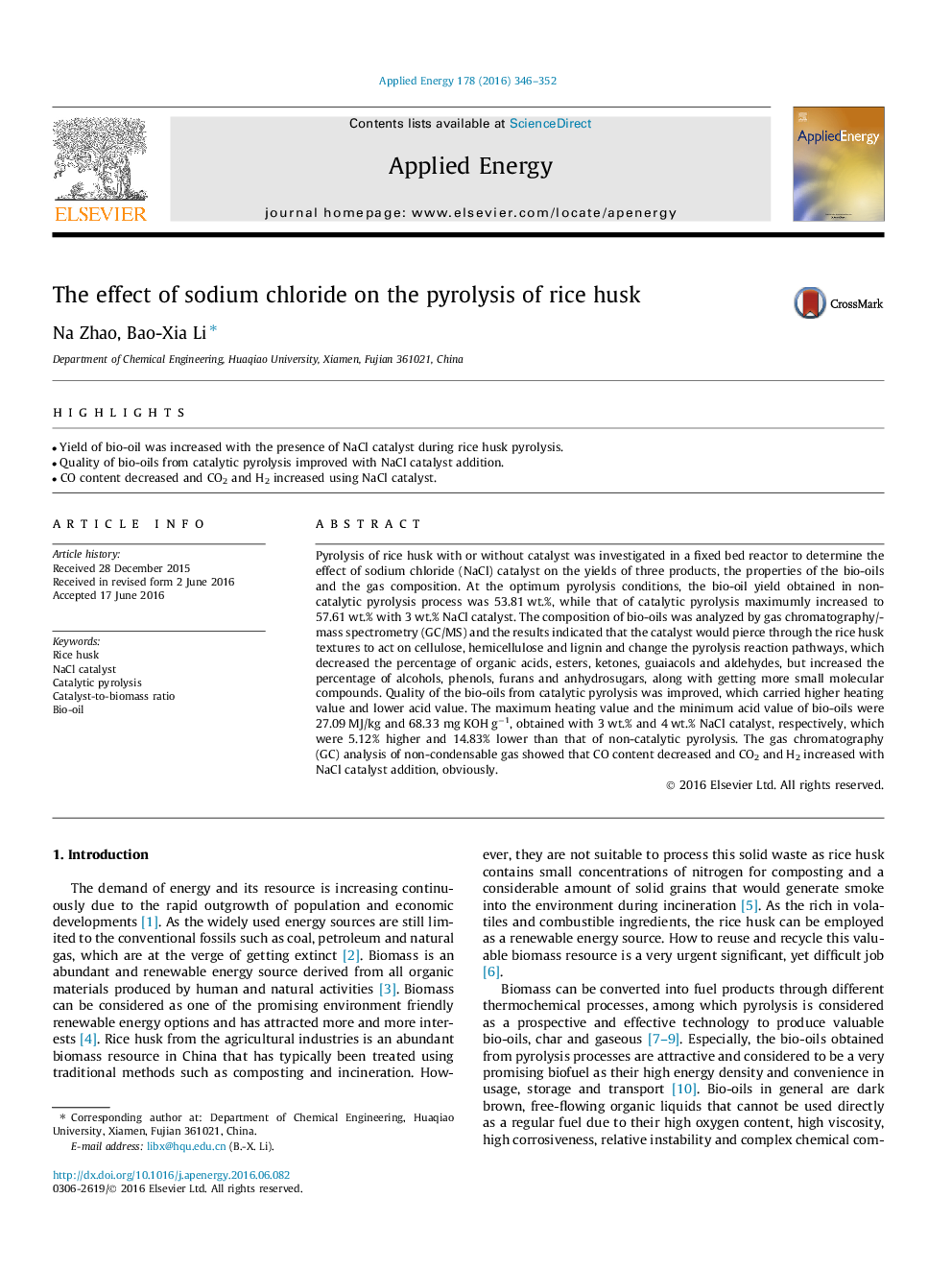| کد مقاله | کد نشریه | سال انتشار | مقاله انگلیسی | نسخه تمام متن |
|---|---|---|---|---|
| 6682485 | 501848 | 2016 | 7 صفحه PDF | دانلود رایگان |
عنوان انگلیسی مقاله ISI
The effect of sodium chloride on the pyrolysis of rice husk
ترجمه فارسی عنوان
اثر کلرید سدیم بر پریئلیس پوسته برنج
دانلود مقاله + سفارش ترجمه
دانلود مقاله ISI انگلیسی
رایگان برای ایرانیان
موضوعات مرتبط
مهندسی و علوم پایه
مهندسی انرژی
مهندسی انرژی و فناوری های برق
چکیده انگلیسی
Pyrolysis of rice husk with or without catalyst was investigated in a fixed bed reactor to determine the effect of sodium chloride (NaCl) catalyst on the yields of three products, the properties of the bio-oils and the gas composition. At the optimum pyrolysis conditions, the bio-oil yield obtained in non-catalytic pyrolysis process was 53.81 wt.%, while that of catalytic pyrolysis maximumly increased to 57.61 wt.% with 3 wt.% NaCl catalyst. The composition of bio-oils was analyzed by gas chromatography/mass spectrometry (GC/MS) and the results indicated that the catalyst would pierce through the rice husk textures to act on cellulose, hemicellulose and lignin and change the pyrolysis reaction pathways, which decreased the percentage of organic acids, esters, ketones, guaiacols and aldehydes, but increased the percentage of alcohols, phenols, furans and anhydrosugars, along with getting more small molecular compounds. Quality of the bio-oils from catalytic pyrolysis was improved, which carried higher heating value and lower acid value. The maximum heating value and the minimum acid value of bio-oils were 27.09 MJ/kg and 68.33 mg KOH gâ1, obtained with 3 wt.% and 4 wt.% NaCl catalyst, respectively, which were 5.12% higher and 14.83% lower than that of non-catalytic pyrolysis. The gas chromatography (GC) analysis of non-condensable gas showed that CO content decreased and CO2 and H2 increased with NaCl catalyst addition, obviously.
ناشر
Database: Elsevier - ScienceDirect (ساینس دایرکت)
Journal: Applied Energy - Volume 178, 15 September 2016, Pages 346-352
Journal: Applied Energy - Volume 178, 15 September 2016, Pages 346-352
نویسندگان
Na Zhao, Bao-Xia Li,
